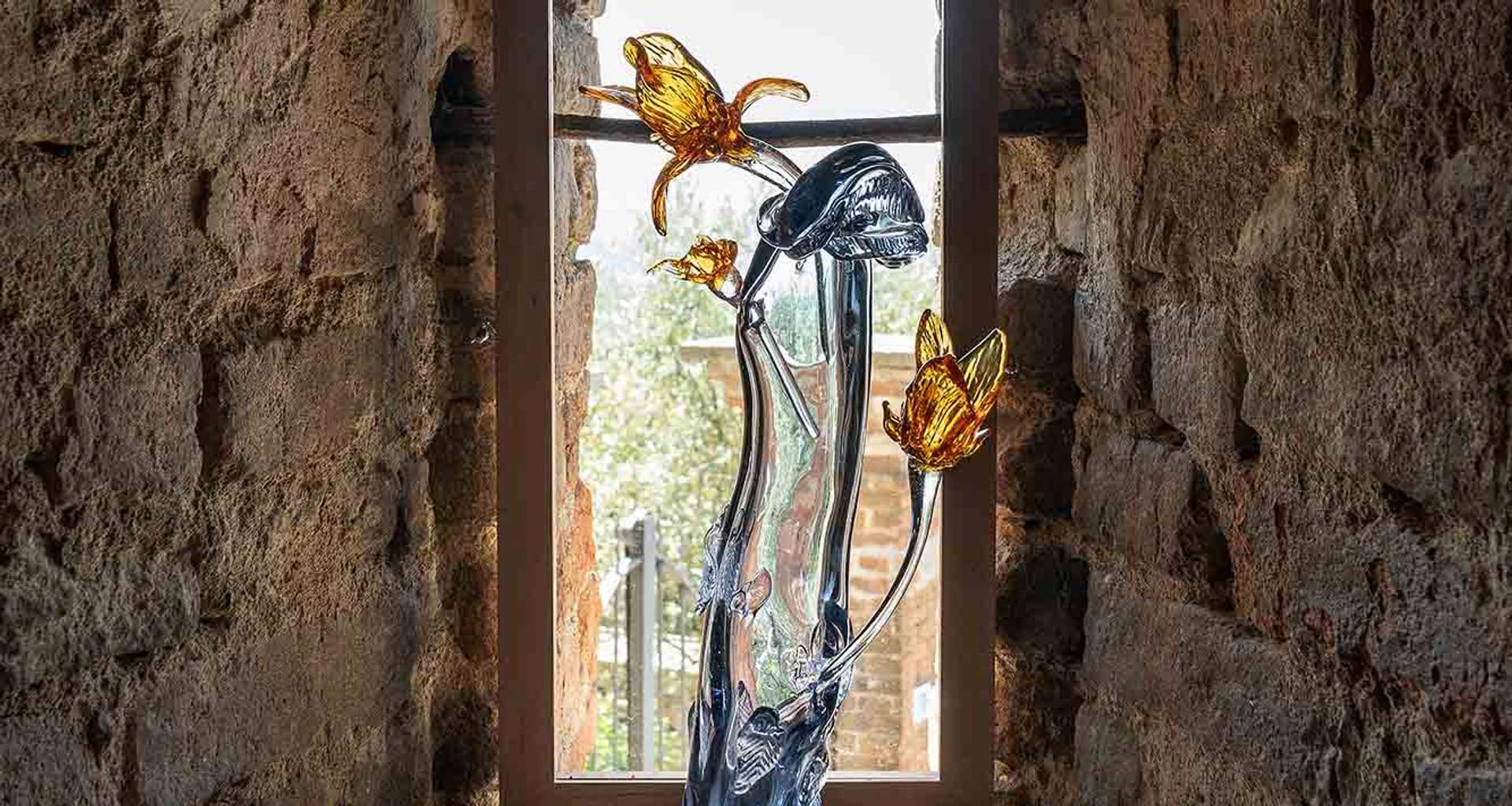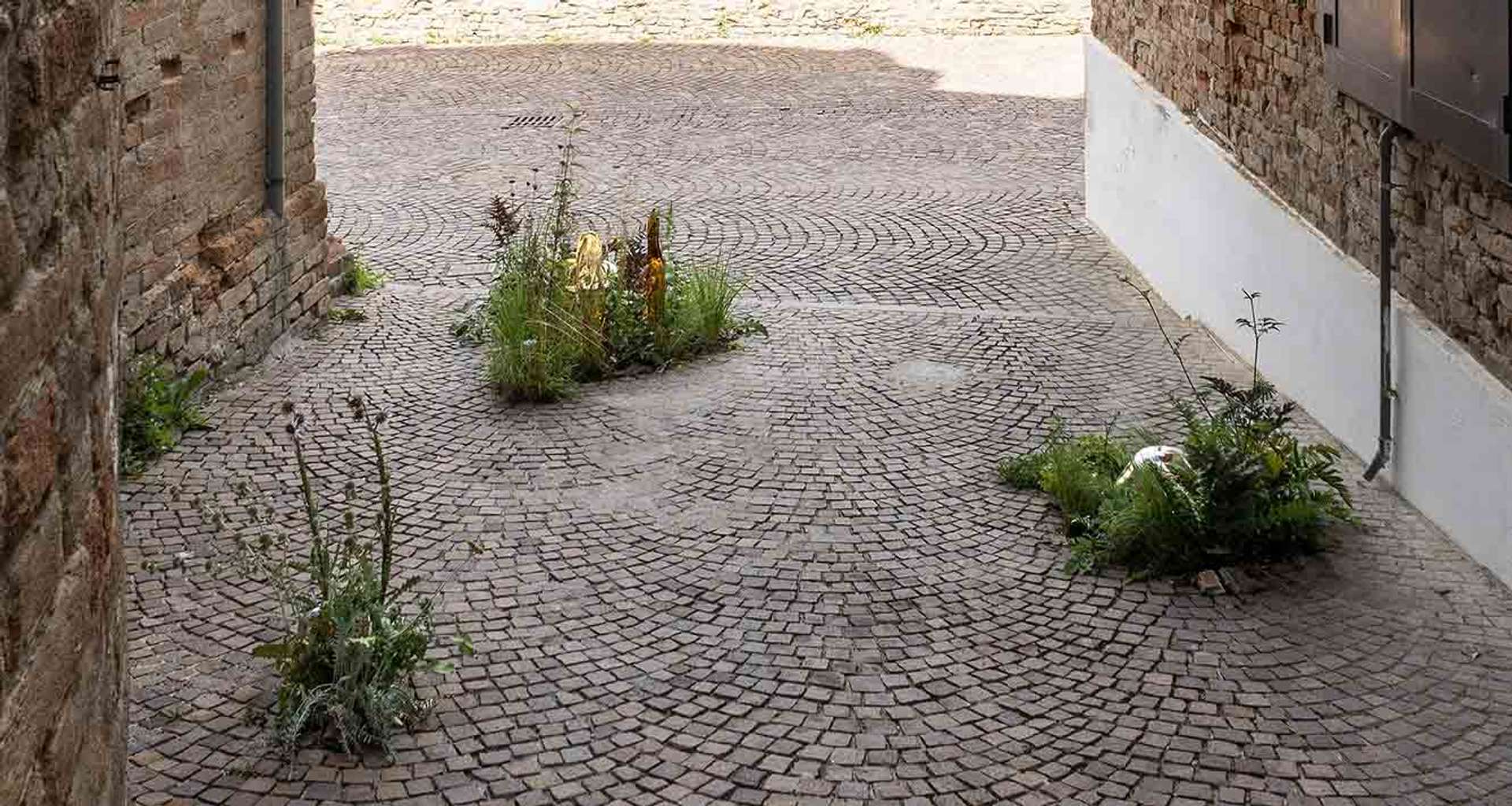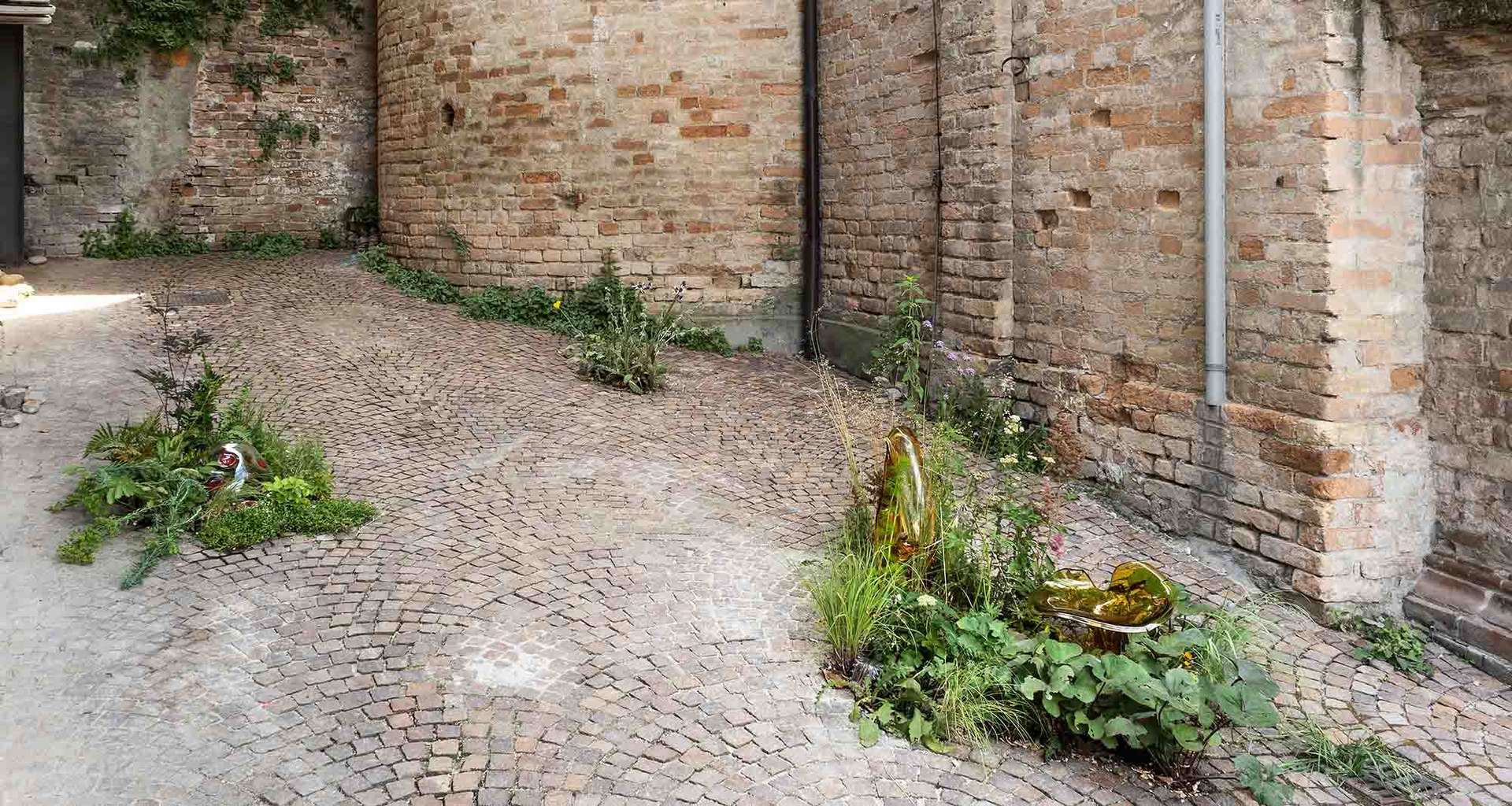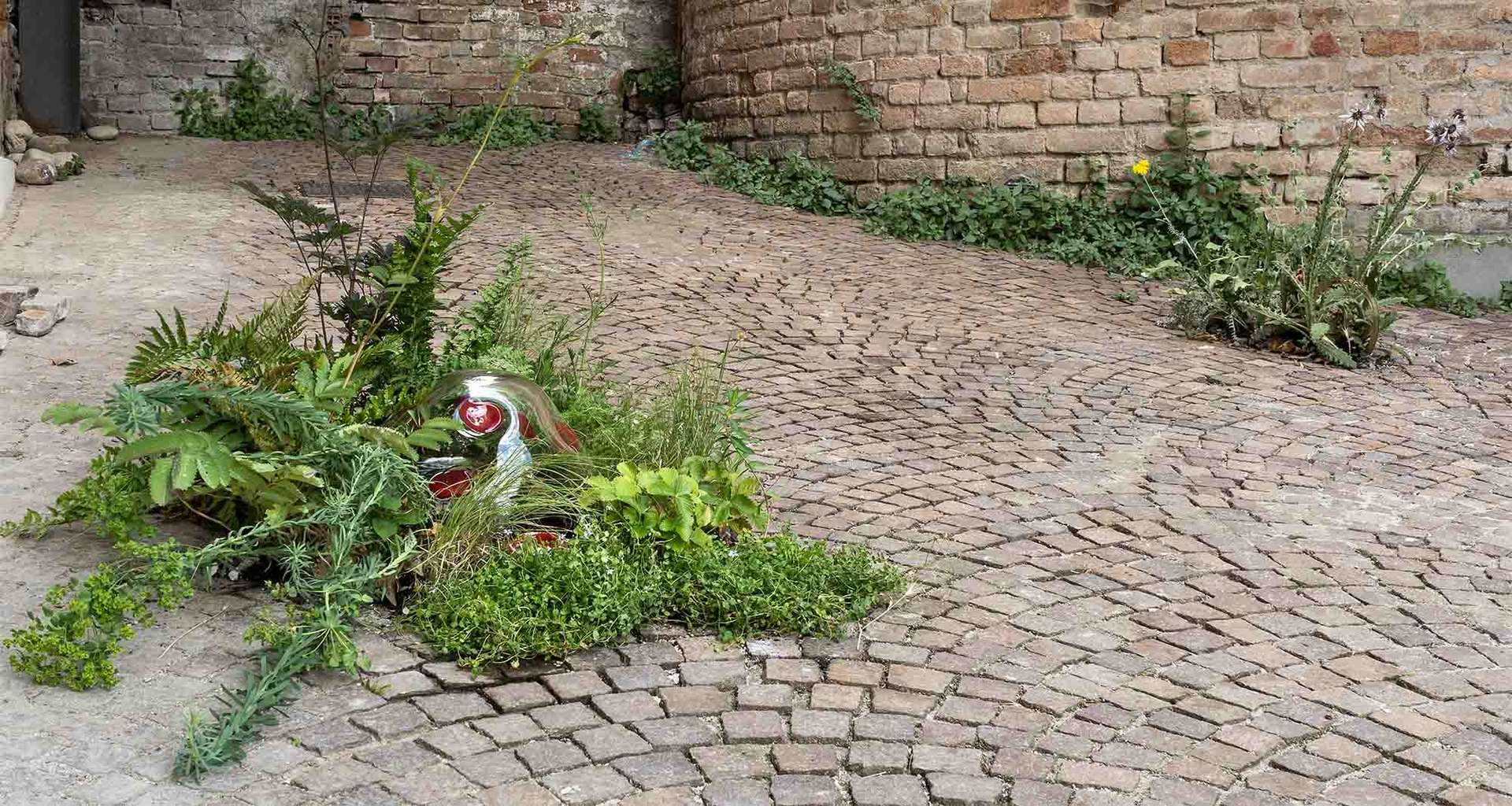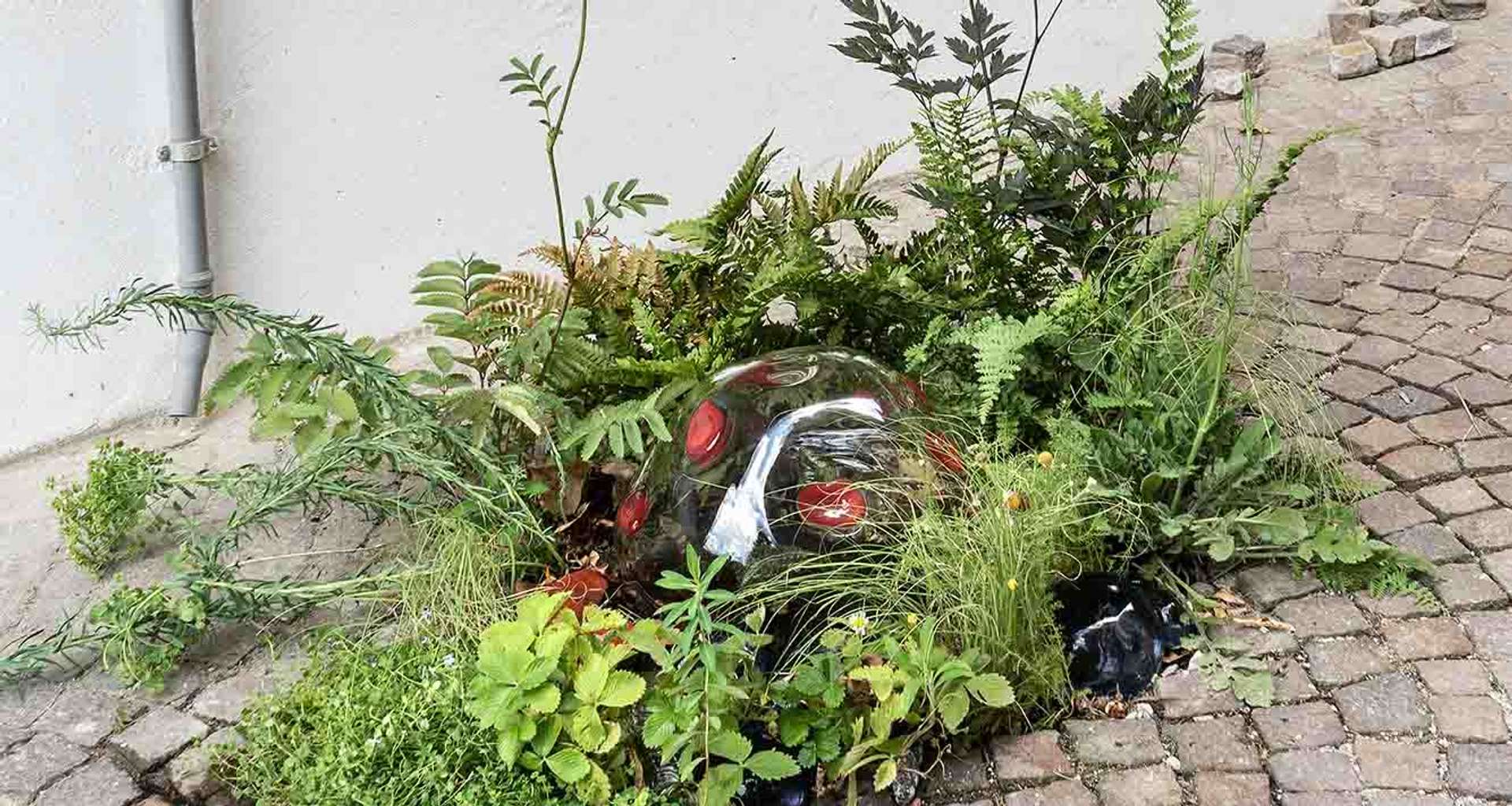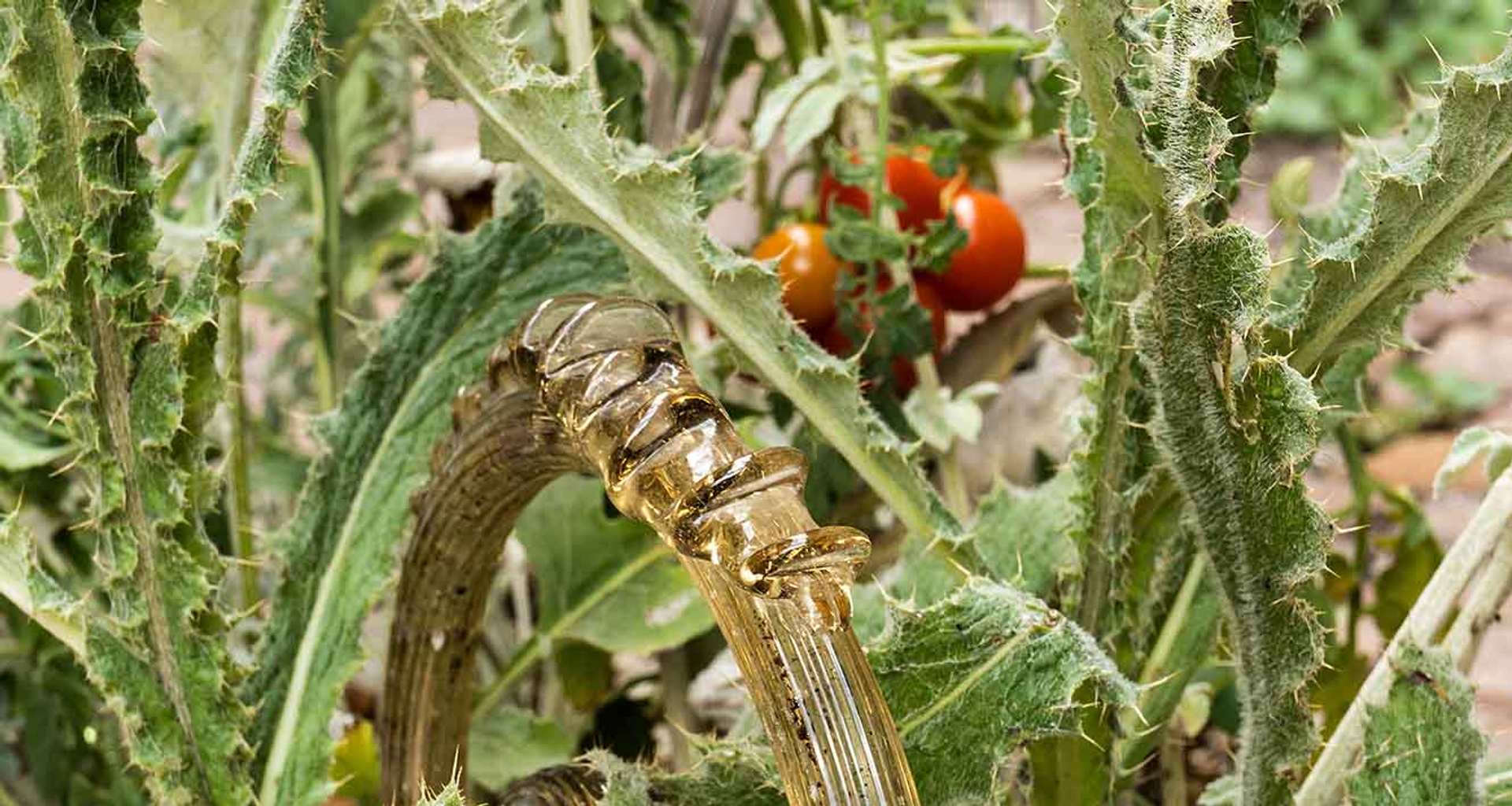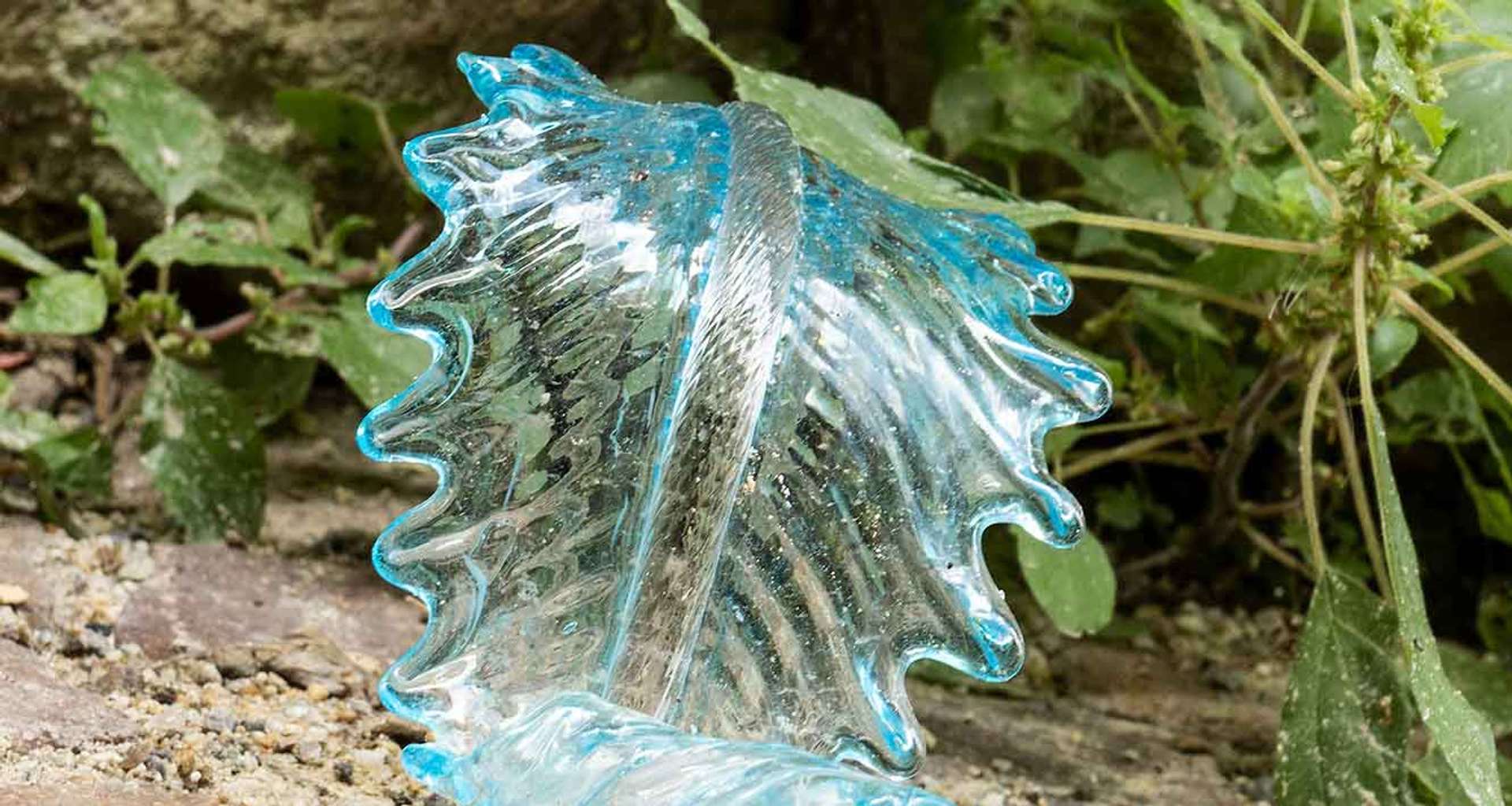It’s not just science fiction. Every year 5,200 tons of meteorites and cosmic dust fall on the planet, legacies of comets and asteroids. Thus, could have begun life on Earth, with alien germs that have traveled astride colliding celestial bodies. It is the theory of Panspermia, like spores or seeds moved by the wind which, by depositing themselves, transform every place.
Then the mushrooms, the mycelia! Thanks to their unique ability to consume rocks and minerals to extract nutrients, they have paved the way for evolution and for plants. They live in symbiosis with the plant world and circulate information and nourishment through an infinite underground network.
This cooperation between species guarantees biodiversity; it is the fluidity of nature between different realms that fuels life on the planet, like the human imagination.
For Una Boccata d’Arte, the artist reformulates these concepts through a science fiction narrative and pursues his artistic research, intertwining science and biology with the characteristics of the place. The richness of the subsoil is exceptional in the village of Neive, where the composition of the soil changes almost from hectare to hectare. For this reason, the vineyards of the Langhe are so precious and transform the landscape into a splendid winemaking monoculture, surrounded by rows of hazelnuts under which truffles can be found. Biodiversity has been domesticated by centuries of anthropization to produce the best of the territory but there are also anomalies, such as the Spiaggia dei Cristalli of the Tanaro river.
Pic nic sul ciglio della strada takes its title from the famous science fiction novel by the Strugackij brothers (Roadside picnic, 1972). As in the book, where some “Zones” have been transformed by artifacts left by aliens, here the street and a window sill of Torre dell’Orologio (the clock tower) have been contaminated with seeds and spores. Spontaneous groups of native plants break through the pavement together with a series of glass sculptures with metamorphic shapes, interspecies between mushrooms and plants. It is an installation that comes from the soil of Neive, on the side of the road, between spontaneity, biodiversity, fragility of ecosystems, strength and fluidity of nature.
THERE IS AN APPARENT PERFECTION IN THE LANGHE AREA,
THE GEOMETRIC ORDER OF THE VINEYARDS, THE HARMONY,
THE PEACEFUL HILLS WITH THE MEDIEVAL VILLAGES. THERE IS NOTHING MORE UNCONTROLLABLE THAN THE
CONTINUOUS INTERSPECIFIC COLLABORATION OF NATURE IN
ATTEMPTS TO RESTORE ITS FAVORABLE ORDER
Natália Trejbalová (Košice, Slovakia, 1989) lives and works in Milan. She studied painting at the Accademia di Belle Arti in Bologna and later, in Milan, cinema and video at Scuola di Nuove Tecnologie dell’Arte di Brera. Her multidisciplinary artistic practice leaves no space for boundaries between the media, using the same approach whether it be video, object, drawing, photography, performance and more. In her latest films, she explores through the possibilities of science fiction and speculative world-making our individual perception of global-scale transformations, possible future interspecies relations and changes in the planetary environment. She participated in various group and solo exhibitions in different institutions and spaces such as Power Station of Arts, Shanghai (CN), Fotomuseum Winterthur (CH), Quadriennale di Roma (IT), Regional Art Gallery Liberec (CZ), L’Esprit Nouveau (IT), 35m2 (CZ), PAV Turin (IT), Regional Art Gallery Pardubice (CZ), Enclave Projects (GB), Gossamer Fog (GB), Galerie Charlot (FR), Fondazione Pini (IT) and others. Her recent solo shows include Isle of the Altered Sun at A Promise of Kneropy (2021), Bratislava, Slovakia, About Mirages and Stolen Stones (2020) at Case Chiuse HQ, Milan, and suddenly the apparition was gone, long gone (2020) at XY, Olomouc, Czech Republic. Her videos have been presented in several important festivals and institutions, like Mudam – Luxembourg and soon also at Palais de Tokyo, Paris. Trejbalová was also invited in residency by international institutions such as Schafhof- Europäisches Künstlerhaus Oberbayern (Freising, 2021); Kunststiftung Baden-Württemberg (Stuttgart, 2018); VIR ViaFarini in Residence (Milan, 2017); AIR Futura (Prague, 2016); SÍM Reykjavík (Iceland, 2015). She also participated in Arte Visione Lab 2019 and in 2021 she won the XXVI Premio Gallarate for her video About mirages and stolen stones, 2020. Natália Trejbalová is also part of the artistic duo Bellagio Bellagio.
"PIC NIC SUL CIGLIO DELLA STRADA" TAKES ITS TITLE FROM THE FAMOUS SCIENCE FICTION NOVEL BY THE STRUGACKIJ BROTHERS (ROADSIDE PICNIC, 1972). AS IN THE BOOK, WHERE SOME “ZONES” HAVE BEEN TRANSFORMED BY ARTIFACTS LEFT BY ALIENS, HERE THE STREET AND A WINDOW SILL OF TORRE DELL’OROLOGIO (THE CLOCK TOWER) HAVE BEEN CONTAMINATED WITH SEEDS AND SPORES
Neive is a town of about 3,000 inhabitants in the province of Cuneo, that has been inhabited since the Neolithic period, around 5,000 years ago. The town owes its name to a noble Roman family, the “gens Naevia” or “Naevii”, as it was under their possession. Under the empire of Charlemagne, the town was ceded as a fief. At the fall of the Holy Roman Empire, the Hungarians and then the Saracens arrived. In 1274, due to a dispute between Asti and Alba, the castle of Neive was stormed and destroyed out of spite. From 1560, after about 17 years of French usurpation, it was returned to the Savoy family, with Emanuele Filiberto and his son Carlo Emanuele I. In 1618, under Carlo Emanuele I’s reign, Neive became a fiefdom assigned to Count Vittorio Amedeo Dal Pozzo who assumed the title of first Earl of Neive. With the House of Savoy, Neive followed the fate of the kingdom until the constitution of the Italian Republic. Stately homes, like the one built between 1759 and 1789 in the Savoy Baroque style that belonged to the Counts of Castelborgo (1751) and the archconfraternity of San Michele, are the work of the Neivese architect Giovanni Antonio Borgese. The nearby Torre dell’Orologio (1224) is from the same period and was built under the dominion of the municipality of Asti.
